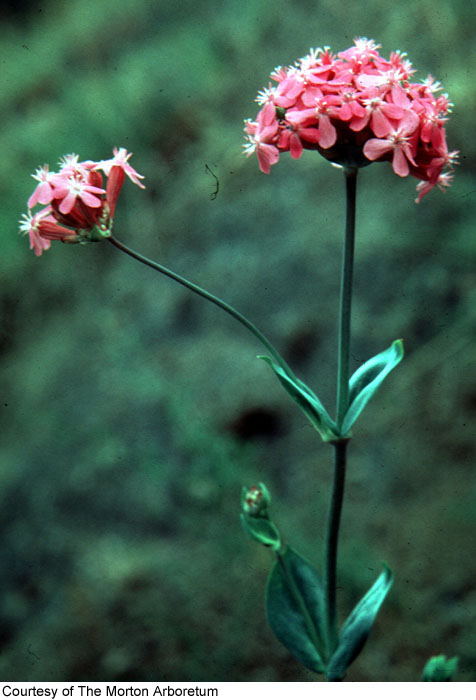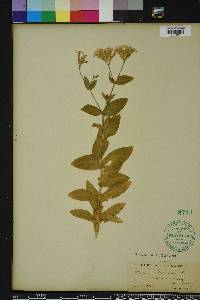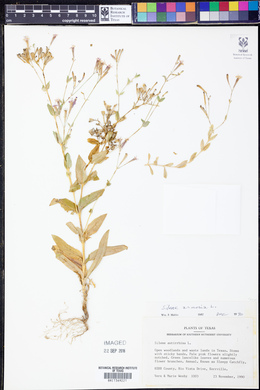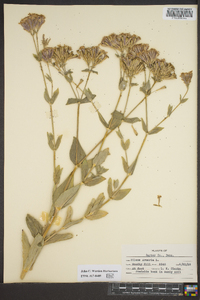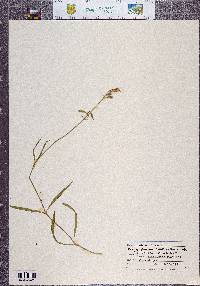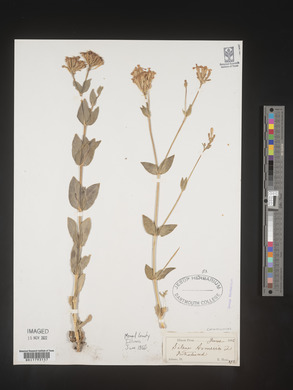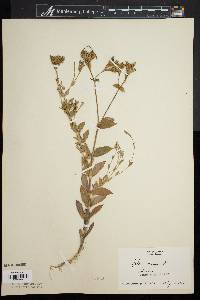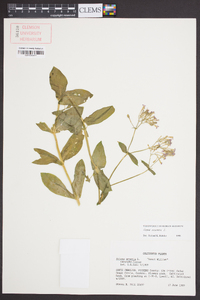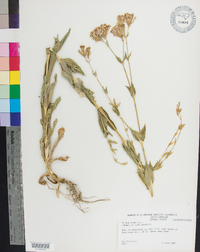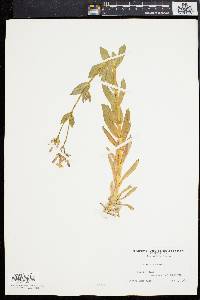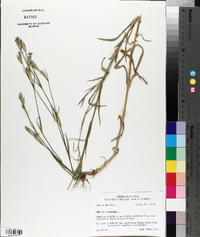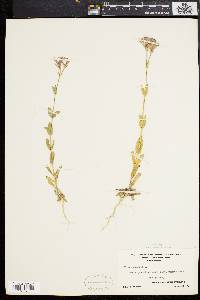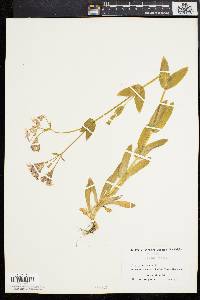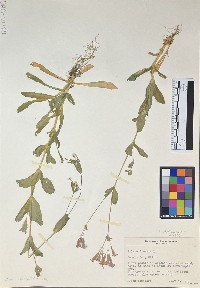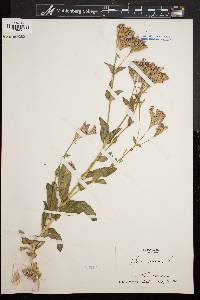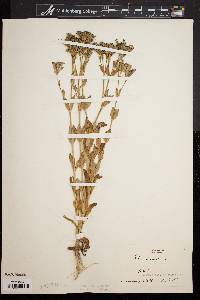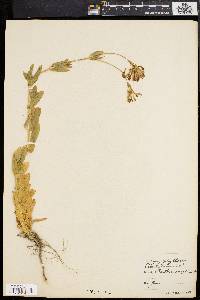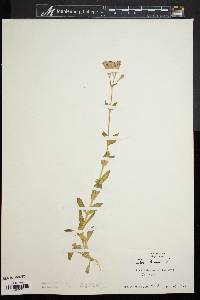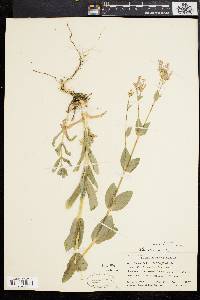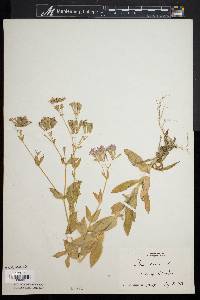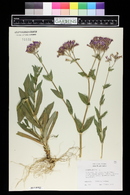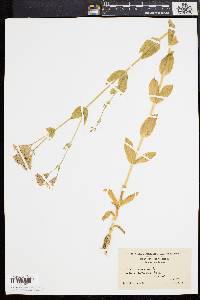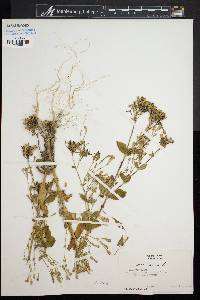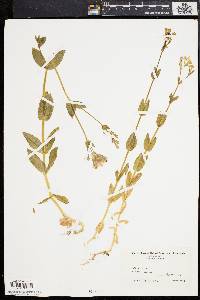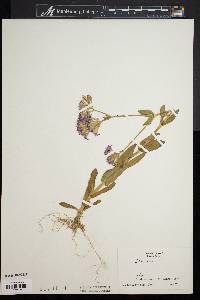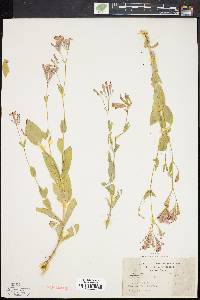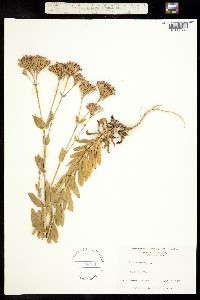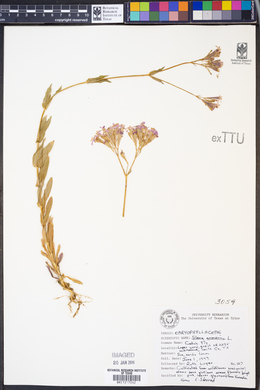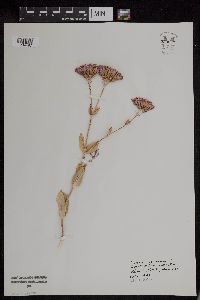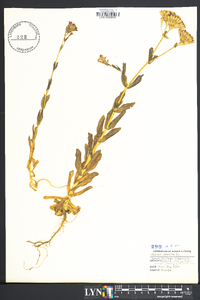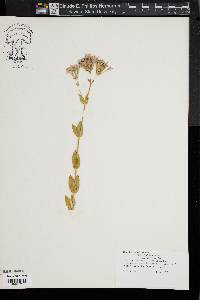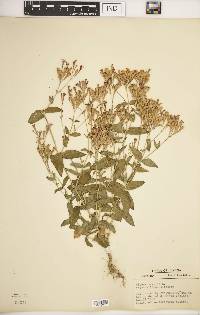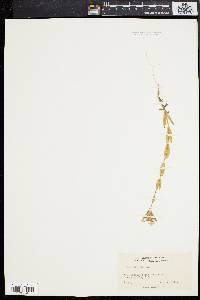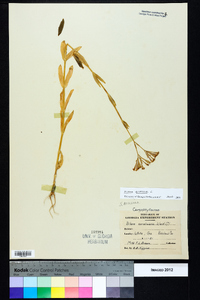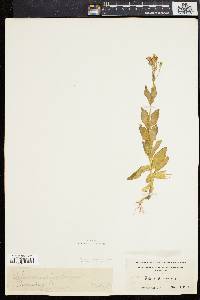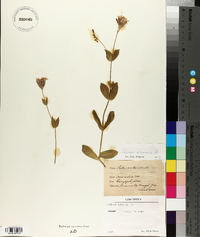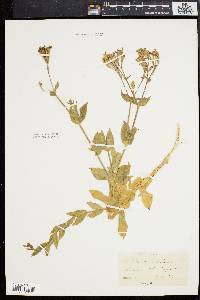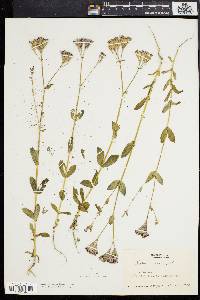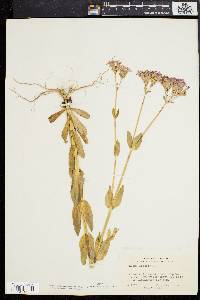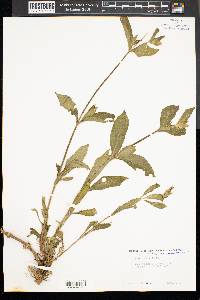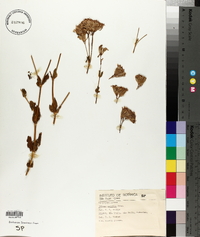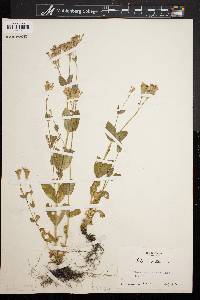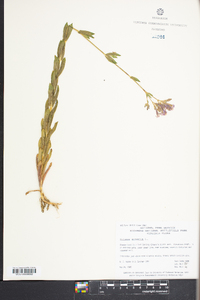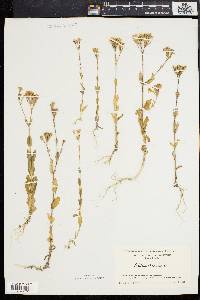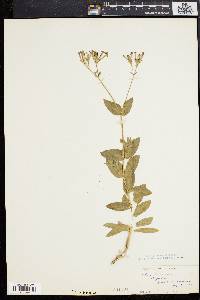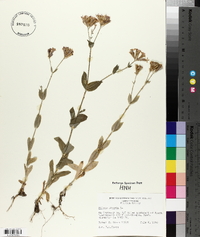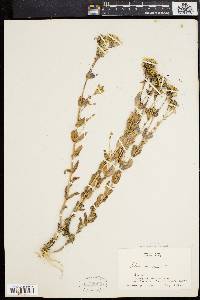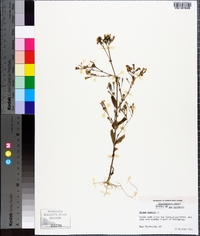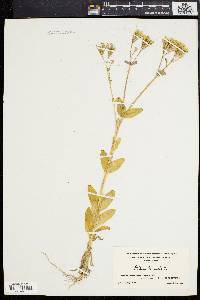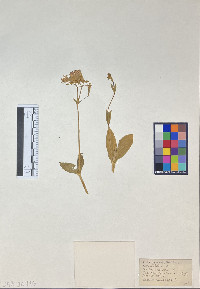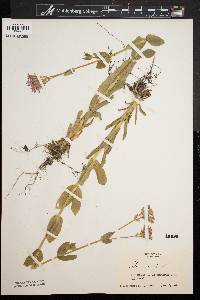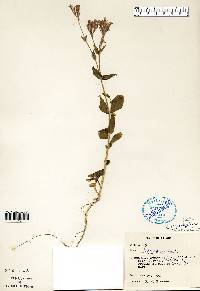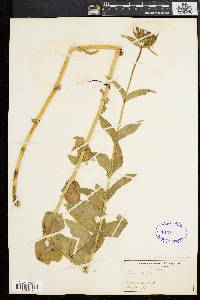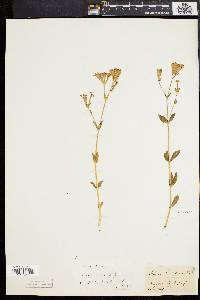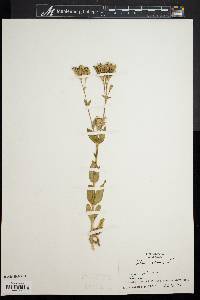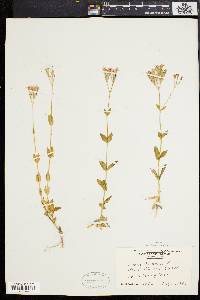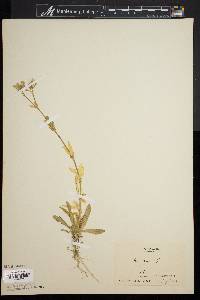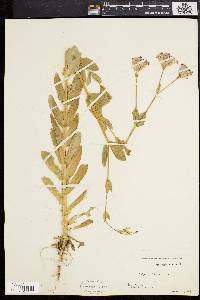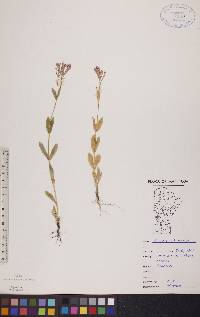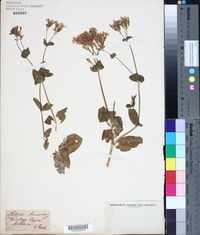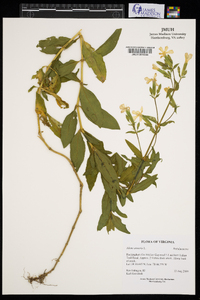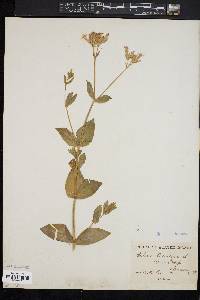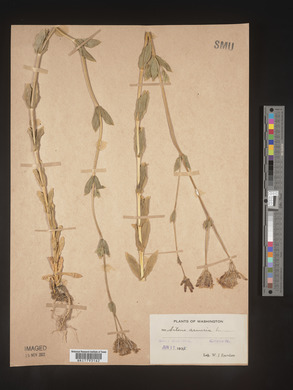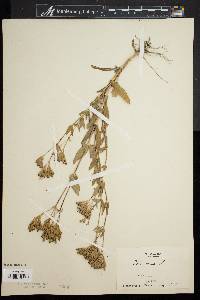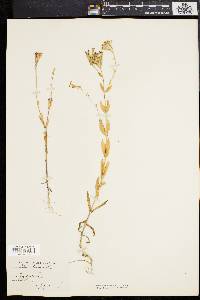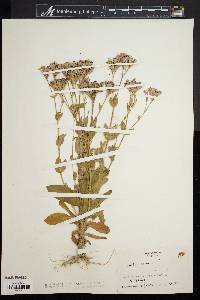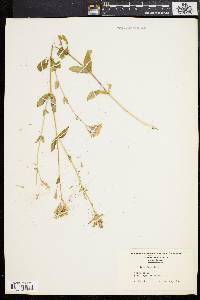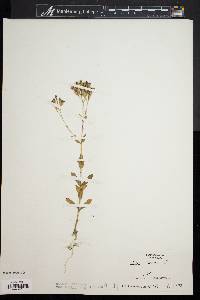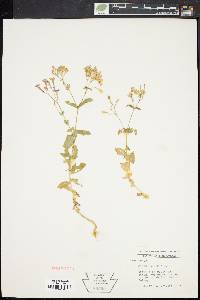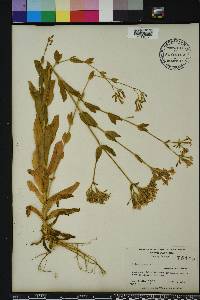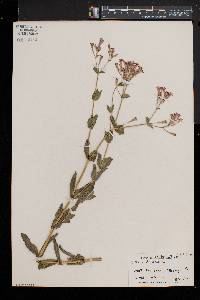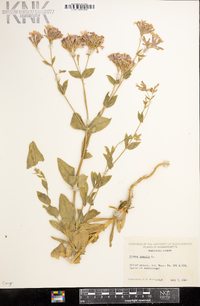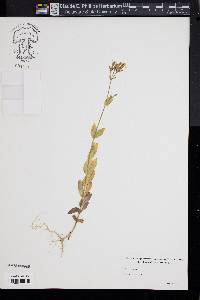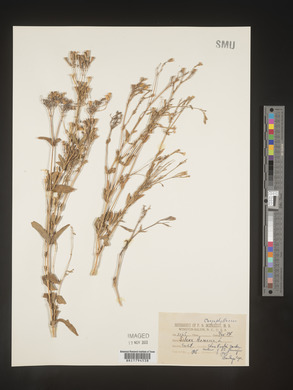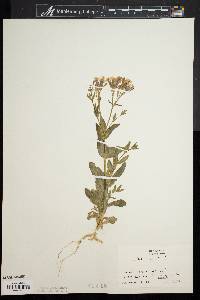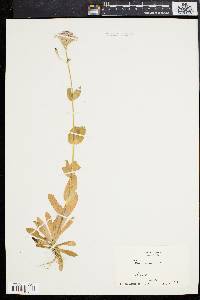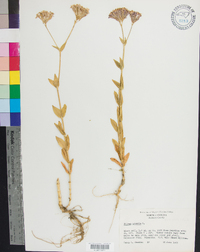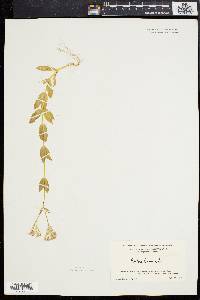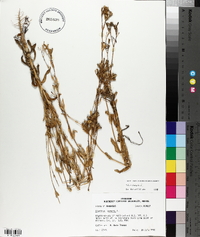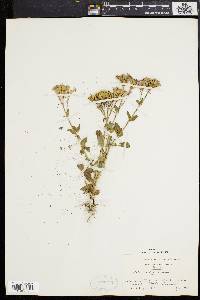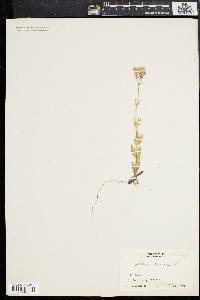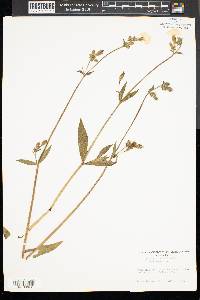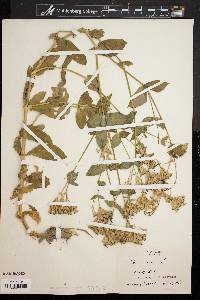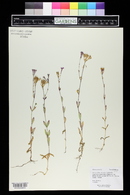
|
|
|
|
Family: Caryophyllaceae
Sweet-William Catchfly
|
Plants annual, glabrous through-out, ± glaucous, some-times glu-tinous in distal parts; taproot slender. Stems simple, branched in inflorescence, (10-)20-40(-70) cm. Leaves: basal withering be-fore flowering, blade lanceolate-spatulate, 2-5 cm; cauline sessile to amplexicaulous, blade lanceolate to ovate or elliptic, 1-6 cm × 5-25 mm, apex acute. Inflorescences cymose, bracteate; cyme capitate or with flowers clustered at end of slender branches; bracts lanceolate-acicular, 2-10 mm. Pedicels 0.1-0.5 cm. Flowers: calyx usually purple tinged, 10-veined, elongate, clavate, lobed, constricted proximally into narrow tube, 13-17 × 2.5-4 mm, rather mem-branous; lobes ovate-triangular, ca. 1 mm, apex obtuse; petals pink (rarely white), unlobed, limb obovate, ca. 5 mm, base cuneate into claw 6-8 mm, auricles absent, appendages linear to lanceolate, 2-3 mm, apex acute; stamens slightly longer than petal claws; styles 3(-4), exserted. Capsules oblong, 7-10 mm, opening by 6 (or 8) spreading teeth; carpophore 7-8 mm, glabrous. Seeds dark brown, reniform-rotund, less than 1 mm diam., rugose. 2n = 24 (Europe). Flowering summer. Waste places, disturbed ground; 0-1200 m; introduced; B.C., N.B., N.S., Ont., Que.; Calif., Conn., Del., D.C., Fla., Ill., Ind., Ky., Maine, Md., Mass., Mich., Minn., Mo., N.H., N.J., N.Y., N.C., Ohio, Oreg., Pa., S.C., Utah, Vt., Va., Wash., W.Va., Wis.; Europe. The long-tubular, clavate calyx enclosing the unusually long carpophore helps to distinguish Silene armeria. It is an occasional and adventive garden escape.
Annual herb with a slender taproot 10 cm - 0.7 m tall Stem: unbranched (branched in inflorescence), sometimes sticky above, with a more or less waxy coating (glaucous). Inflorescence: an open or compact cluster (cyme) of flowers subtended by 2 - 10 mm long bracts. Flowers: pink. Stalk upright, to 0.5 cm long. Stamens ten. Styles three, exserted. Sepals: fused at the base into a tube (calyx). Calyx tube tinged purple, about 1.5 cm long, 2.5 - 4 mm wide, elongate, club-shaped, constricted below, ten-veined, with five short lobes. Lobes about 1 mm long, and egg-shaped to triangular with a blunt tip. Petals: five, pink, 4 - 7 mm long, reverse egg-shaped with a tapering base and pointed tip, narrowly clawed, unlobed. Fruit: a dehiscent capsule, three-chambered, opening by six (or eight) spreading teeth, 7 - 10 mm long, oblong. Seeds dark brown, less than 1 mm long, kidney-shaped to rounded, wrinkled. Basal leaves: 2 - 5 cm long, lance- to spatula-shaped, withering before flowering. Stem leaves: opposite, stalkless, more or less clasping, 1 - 6 cm long, 0.5 - 2.5 cm wide, lance-shaped to elliptic with a pointed tip. Similar species: No information at this time. Flowering: mid-June to late August Habitat and ecology: Introduced from Europe. Sometimes grown as a garden flower. An occasional escape from cultivation and becoming a weed in flower beds, alleys, and in vacant areas near buildings. Very abundant in the older sections of Chicago, especially in flower beds. Occurence in the Chicago region: non-native Etymology: Silene probably comes from the Greek word sialon, meaning saliva, referring to the sticky secretion on many of these plants. It may also have come from the word seilenos, referable to Silenus-a foam-covered, drunken character in Greek Mythology. Armeria is Latin for Dianthus. Author: The Morton Arboretum Glabrous or rarely sparsely puberulent annual 1-7 dm, the stem sometimes with slightly glutinous zones below some of the upper nodes; lvs sessile and ±clasping (basal more spatulate), 2-5 נ0.5-1.5 cm, rather numerous; infl open or compact, the ultimate cymes congested; cal tubular-clavate, much constricted below, umbilicate, 13-17 mm, 10-nerved; pet pink or lavender, auricles none, appendages linear, 2-3 mm, the blade 4-7 mm, obovate, truncate to emarginate; carpophore 7-8 mm; fr almost wholly 3-locular; seeds 0.6 mm wide, rugose; 2n=24. Native of Europe, formerly much cult., and found as a casual weed in our range. June, July. Gleason, Henry A. & Cronquist, Arthur J. 1991. Manual of vascular plants of northeastern United States and adjacent Canada. lxxv + 910 pp. ©The New York Botanical Garden. All rights reserved. Used by permission. |
|
|
|
This project was made possible in part by the Institute of Museum and Library Services [MG-70-19-0057-19].
Powered by Symbiota

